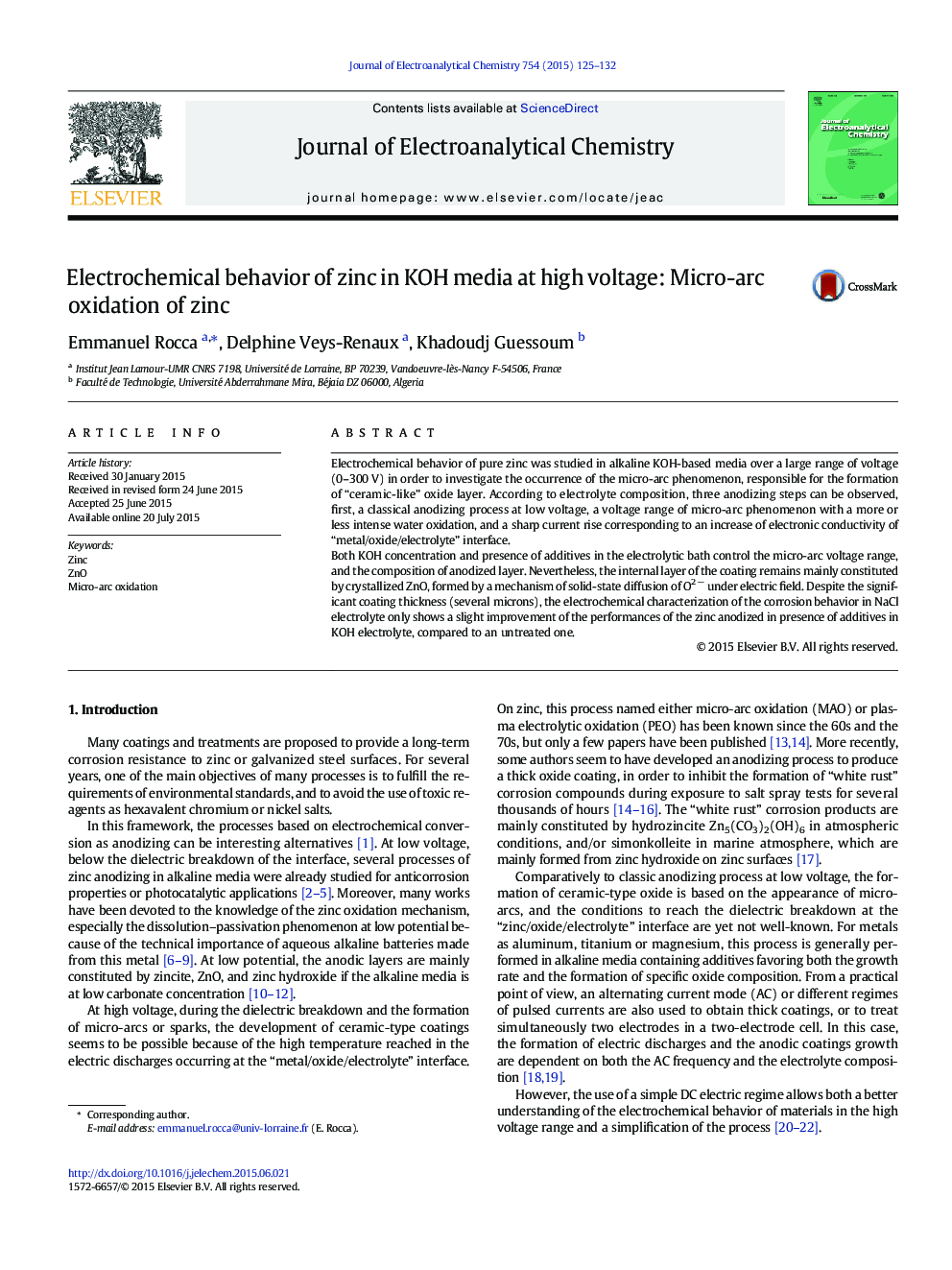| Article ID | Journal | Published Year | Pages | File Type |
|---|---|---|---|---|
| 218186 | Journal of Electroanalytical Chemistry | 2015 | 8 Pages |
•Three steps are observed: an anodizing step, a micro-arc region, and a sharp current rise.•The KOH content and the additives control the voltage range of micro-arc region.•Additives are mainly incorporated in an external layer of the coating.•The internal layer of coating is constituted by ZnO, formed by the O2 − diffusion under electric field.
Electrochemical behavior of pure zinc was studied in alkaline KOH-based media over a large range of voltage (0–300 V) in order to investigate the occurrence of the micro-arc phenomenon, responsible for the formation of “ceramic-like” oxide layer. According to electrolyte composition, three anodizing steps can be observed, first, a classical anodizing process at low voltage, a voltage range of micro-arc phenomenon with a more or less intense water oxidation, and a sharp current rise corresponding to an increase of electronic conductivity of “metal/oxide/electrolyte” interface.Both KOH concentration and presence of additives in the electrolytic bath control the micro-arc voltage range, and the composition of anodized layer. Nevertheless, the internal layer of the coating remains mainly constituted by crystallized ZnO, formed by a mechanism of solid-state diffusion of O2 − under electric field. Despite the significant coating thickness (several microns), the electrochemical characterization of the corrosion behavior in NaCl electrolyte only shows a slight improvement of the performances of the zinc anodized in presence of additives in KOH electrolyte, compared to an untreated one.
